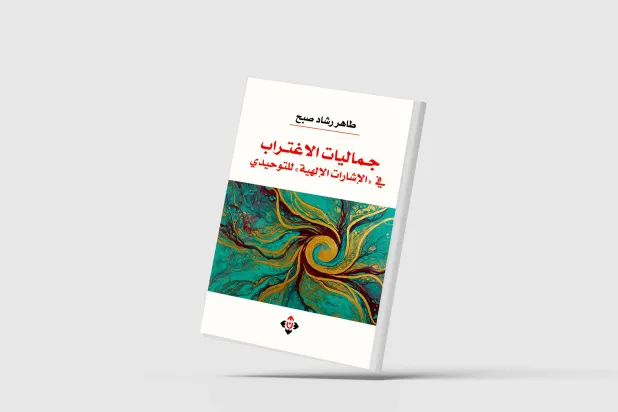
Although working to try to reveal philosophical phenomena in the ancient Arab prose calls for controversy, given the new interpretations and interpretations that can result, the Jordanian researcher Taher Rashad Sobh did not hesitate to monitor the phenomenon of alienation and analyze it, in the “divine signals” of Abu Hayyan al -Tawhidi.
The author explains that his choice of “divine signs” is due to three reasons: First; Because it is a book that combines Sufi prose and the literature of messages at the intellectual and stylistic levels, and second; Because his author is one of the most prominent flags of literature and philosophy, and the third reason; Because it represents a typical laboratory to alienate the human level and in particular the Tahidi experience.
The book, which was recently published by “Now publishers and distributors”, came in Jordan (2025), at an introduction, preliminary, two chapters, and a conclusion.
The researcher singled out the first chapter to talk about the aesthetics of the content and ideas that entered into the door of alienation in “divine references”. And based on the examination and the relentless analysis, and to prevent dispersion; It was found that alienation in “divine references” is located in four citizens: existential alienation, social alienation, Sufi alienation, and psychological alienation. He spared no effort in organizing and coordinating it according to what was stated in the contents of the book without behaving in the texts and interpreting them to meanings far from the destination.
The second chapter was devoted to talking about the aesthetics of style and form in “divine signals”, and he also singled out a part dedicated to talking about the techniques of the form of the message of monotheism, and he used this with a mirror of analysis in the light of the rhetorical approach and in the light of the new rhetoric. He spared no effort in organizing and coordinating it according to the main requirements in this chapter.
In his presentation of the book, the professor of literature and criticism, and the dean of the Faculty of Arts and Educational Sciences at Philadelphia University, Dr. Ghassan Ismail Abdel -Khaleq, said in his presentation to the book: If you focused on his speech, Ola and deepening, and if you focus on his behavior, it is diminished and almost evaporated, and there is no escape, and this situation is to focus on the two, and to work as much as possible to monitor the painful relationship between the writer and the written.
The researcher Taher Sobh in this study, the hardship of engagement with the most depth, flying and transparent books of Al -Tawhidi; He spared no effort to approach the features of alienation in the “divine references” in form and content, to the extent that he surprised his professors who pity him, as a result of his insistence on riding this difficult boat. It also spared no effort to shed light on the concept of alienation, past and present, literary and philosophical.
And if Al -Tawhidi represented his speech and behavior, an in -depth form of the creator’s concern, then Taher Sobh represented in this study, a model of the loyal researcher of the truth, who is indulged with and in it, and in that, let the competitors compete.
The researcher concludes his book with a conclusion in which he outlined the most prominent results and recommendations that resulted in the study, including:
First: This study showed that the literature of alienation in the Arab -Islamic prose is a vital field, and it deserves more research and intellectual and aesthetic studies, and secondly: the structure of dialogue in the “divine references” centered on the correspondence of monotheism for an unidentified address, so it appeared that monotheism in many messages was addressing himself. Third: The rhetoric of the content was characterized by a number of features of alienation, such as: existential alienation, social alienation, Sufi alienation, and psychological alienation.
Fourth: The eloquence of the style was characterized by a number of prominent features such as: the dialogue structure based on the method of sending and responding, communicating, supplication, and the emergence of patterns of construction methods, and the emergence of patterns of wonderful improvements that contributed significantly to clarifying the suffering of monotheism.



